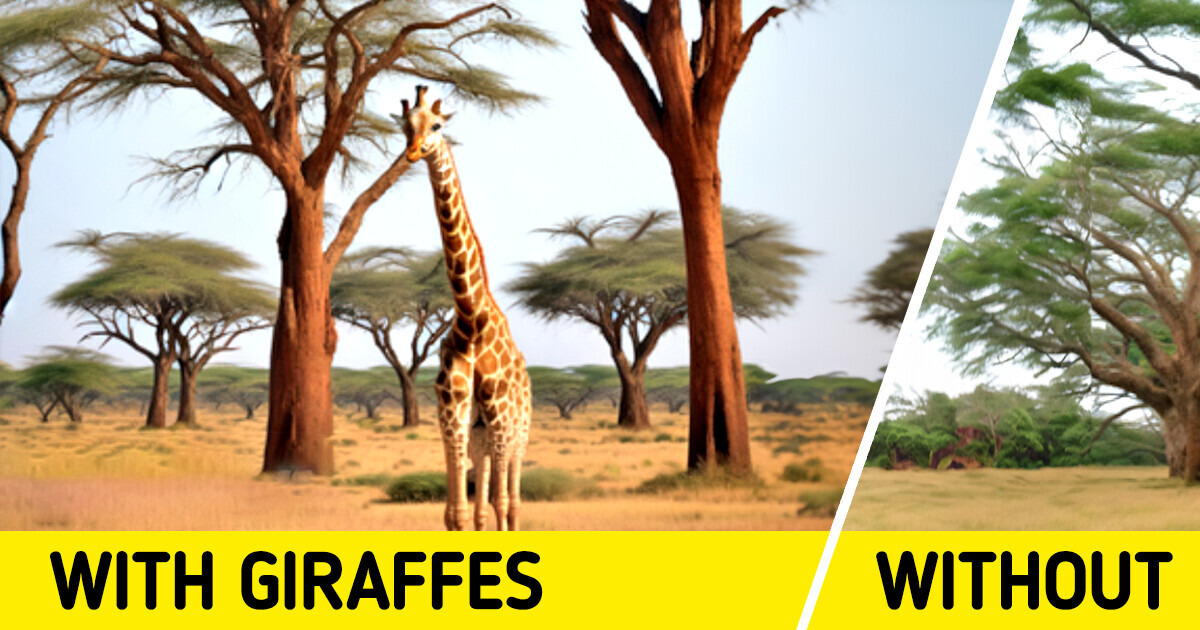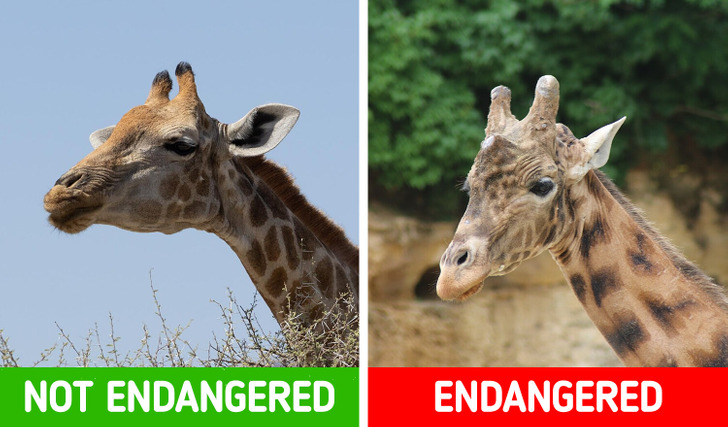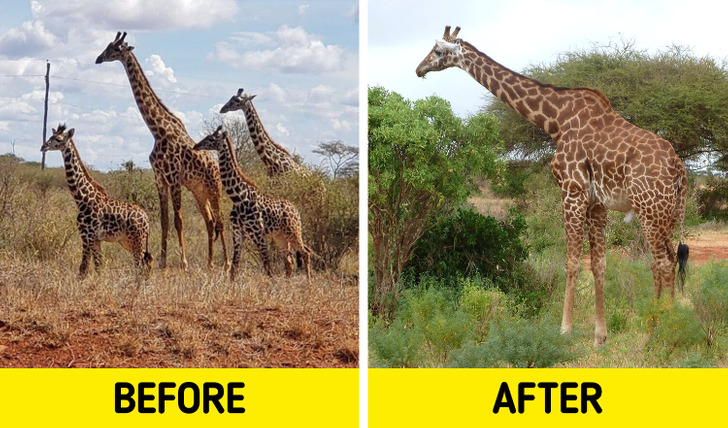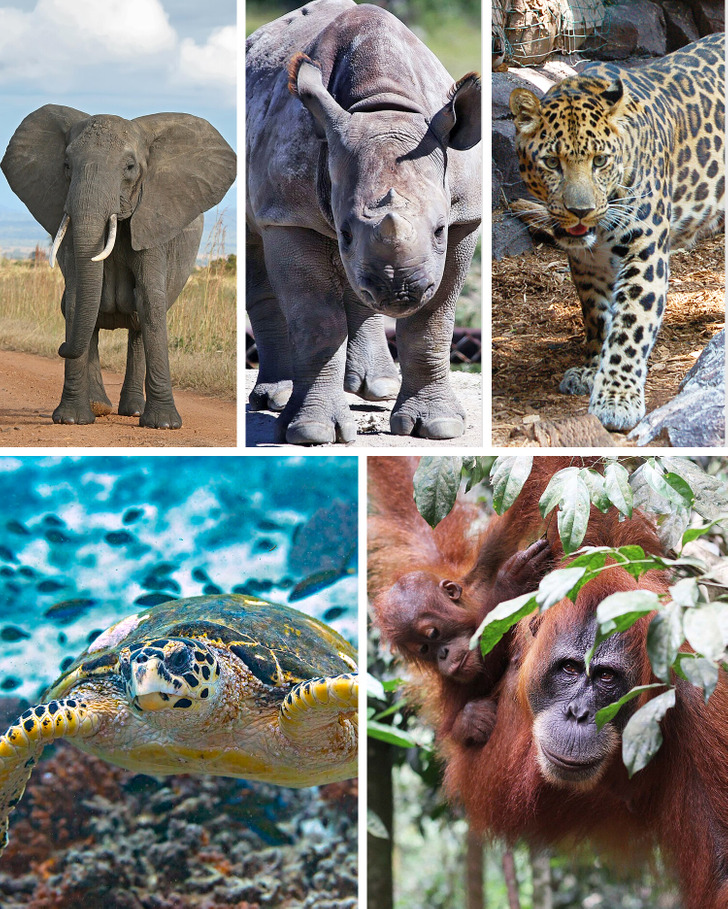Giraffes Could Soon Be Extinct. Here’s What We Can Do / Bright Side
Numbers show that the West African, Kordofan, and Nubian giraffes have declined by 77%, with only 5,919 remaining today. This development is very alarming as giraffes are facing the endangerment alarm for the first time in history. But what does this mean for our planet? Let’s see what the consequences would be if giraffes disappeared from nature.
Why are giraffes close to endangered status?
The decline in giraffe populations is due to a combination of factors. Habitat loss, civil conflicts, poaching, and the expansion of human populations are all contributing to the issue. As urbanization and modernization disrupt traditional giraffe habitats, they increasingly fall victim to electrocution. Giraffes also fall prey to snares set by poachers involved in the bushmeat trade.
Poachers target giraffes and other valuable African wildlife for profit, as their body parts are highly sought after. Over the past 30 years, more than 20,000 giraffe bone carvings have been imported into the U.S. daily. American hunters also travel to Africa to hunt giraffes, often bringing back body parts—especially the head and neck—as trophies.
In 2017, several conservation organizations, including the Humane Society, announced their intention to sue the U.S. Fish and Wildlife Service, claiming giraffes should be protected under the Endangered Species Act, following a survey that indicated the species was endangered. In 2019, federal wildlife officials said they would consider listing giraffes as an endangered species after a 12-month review.
However, the Safari Club International, a hunting advocacy group, argued that such a designation would reduce hunters’ financial interest in giraffe hunts, thereby diminishing the revenue and incentives generated by hunting.
Which giraffe species are threatened?
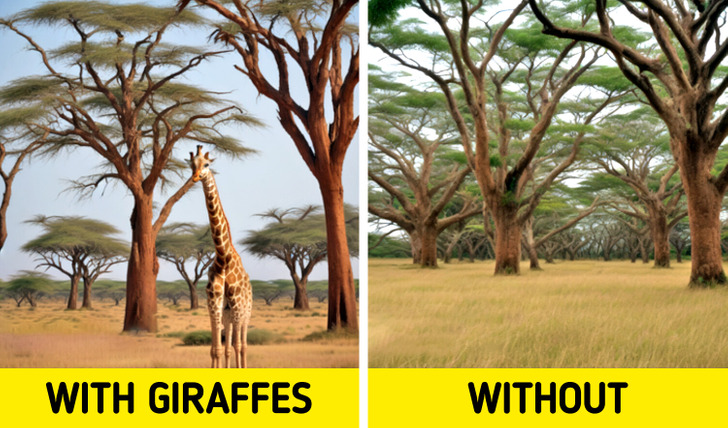
Giraffe populations worldwide are declining severely, with around 110,000 individuals remaining globally. This is a 30% decrease since the 1980s and the numbers will continue to drop if nothing changes. There are certain species that have been targeted more than others, reporting up to 80% decline in numbers. For example, the reticulated giraffe of northern Kenya has decreased by 50%-80% since the 1990s.
West African, Kordofan, and Nubian giraffes have reported the biggest decline in population, going from 25,653 to 5,919 individuals. This is a 77% decrease since 1985 which is a devastating development. The reticulated and Masai giraffes in West Africa are also threatened.
But why aren’t any of these giraffe species officially under endangered status? Many environmental groups and animal conservation groups have been fighting and putting pressure on federal officials to ensure protection for giraffes since 2017. However, they have been very slow to react. They have announced that they will gather public comments until early 2025 and will make a decision by the end of the same year.
The consequences of a possible extinction
Giraffes play a crucial role in Africa, meaning their presence is vital for the stability of the ecosystems they inhabit. Without giraffes, these ecosystems would undergo significant changes and potentially collapse. Due to their remarkable height, giraffes are able to consume vegetation that other animals cannot access.
In turn, plants on lower levels can grow, providing food to smaller animals. Giraffes are also essential for the survival of the acacia tree. Some acacia seedlings cannot germinate successfully until they have passed through a giraffe’s digestive system. Additionally, giraffes’ height and sharp vision enable them to detect predators and potential threats earlier than many other animals, providing an early-warning system for the surrounding wildlife.
Other species on the brink of extinction
Right now there are around 46,300 species threatened with extinction and the numbers aren’t slowing down. Before any species goes extinct there are various categorizations. The ladder goes as such: Least Concern (LC), Near Threatened (NT), Vulnerable (VU), Endangered (EN), Critically Endangered (CR), Extinct in the Wild (EW), and Extinct (EX). Let’s see which species are critically endangered and on the brink of extinction.
- African Forest Elephant: less than 30,000 individuals
- Black Rhino: around 6,195 individuals
- Amur Leopard: around 100 individuals
- Hawksbill Turtle: around 700 nesting females left worldwide
- Bornean Orangutan: around 1,500 individuals
- Saola: no more than 750 individuals
- Vaquita: around 6-8 individuals in the world
- Cross River Gorilla: less than 300 individuals
Many animals of the past have already gone extinct and their relatives have taken their place. For example, modern-day hyenas look different than their ancestors. Check out how animal species changed over time.
